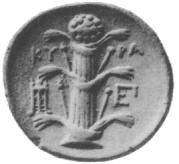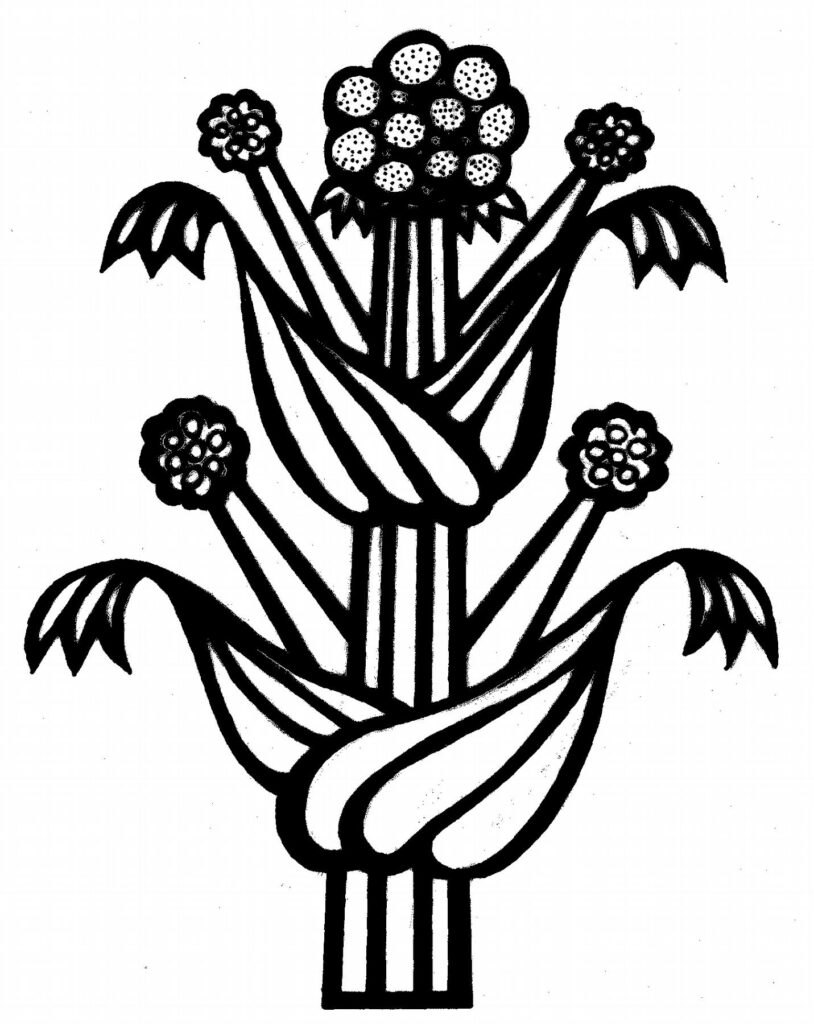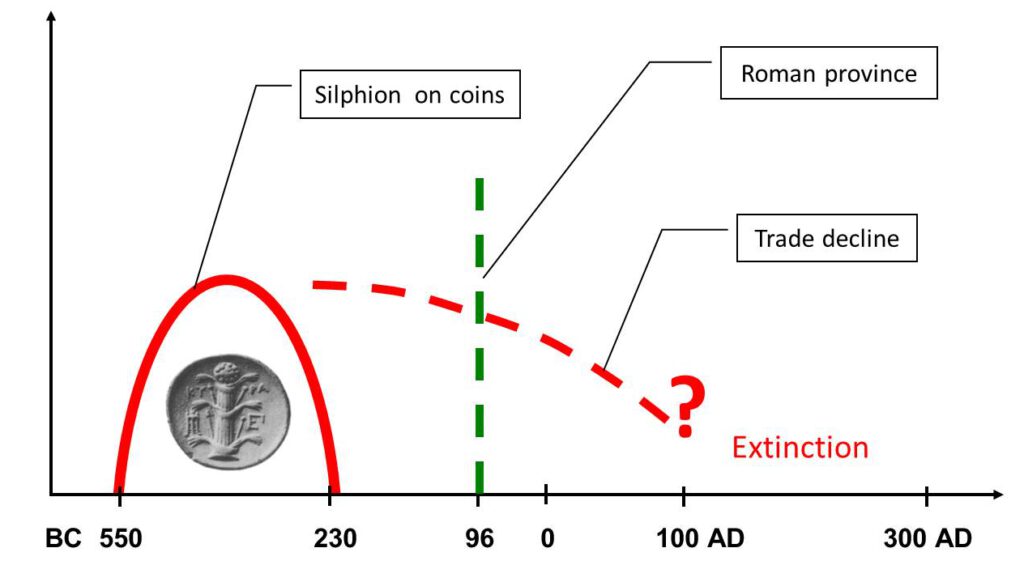The Silphion plant was praised by antique authors and was driven to extinction by humans through overcollection.
History
This is a story about the ancient Cyrene, a city situated in what is now the eastern part of Libya. Between 570 and 250 BC the majority of coins minted in Cyrene carried the embossed picture of the Silphion plant. This reflects the enormous economic importance this plant had for the city over four centuries. Silphion has been mentioned again and again in classical literature by Plinius, Hippocrates, Dioscorides, Herodot, Theophrast and others, so we know quite well that the economy of Cyrene depended on the utilization and export of Silphion. As demand in the Greek and Roman world was great and the supply limited, Silphion gained high prices on the internatonal markets.
Uses

The perennial roots and strongly ribbed annual stems of the Silphion plant were eaten in the fresh state and were regarded as a perfume, flavouring agent, and spice. The juice was employed medicinally against a wide range of symptoms and diseases, especially gynaecological ailments – it was a true ‚multi-purpose species‘ in the sense of modern economic botany.
Botanical identity
Botanists have for a long time tried to taxonomically identify Silphion. It is clear that is has nothing in common with the North American genus Silphium Linnaeus in the Compositae family. Silphion obviously belongs to the Apiaceae family. Its generic affinities have been discussed at length by many authors. Names like Thapsia silphium, Thaspia garganica, Ferula tingitana, Ferula marmarica, and Prangos ferulacea have been suggested. Judging from the many literature sources revised it is clear that the ancient Silphion has at least close affinities to Ferula tingitana, a species which is rare in Cyrenaica today. Silphion may well be a distinct species of its own which became extinct almost 2000 years ago.
An early example of sustainable use turns into over-collection

It appears that Silphion was found only in the dry hinterland between Bengasi and Derna. Attempts to cultivate it seem to have failed, so wild plants remained the source of supply. For the first centuries we can assume that the utilization of this wild plant resource was sustainable. From 250 BC onwards, however, Silphion begins to dissapear from the city’s coins. There was a gradual vanishing of Silphion from the markets and it seems to have been extinct by the first centuries AD.
The progressive extermination of the plant in its range during this period took place after Cyrene was no longer ruled by permanent local residents but by a series of short-term governors who may have tried to maximize the short-term benefits from Silphion utilization. This change in harvesting management could be at least one of the reasons for the dramatic decline in its use and its final extinction as an economic resource.
What we have before us is an example of overharvesting and probable extinction of an ancient medicinal plant. Silphion reflects both the potential wealth through plant utilization and the possible risks and downfall through overharvesting.

Sources
- Kiehn, M. (2007): Silphion revisited. – Medicinal Plant Conservation 13: 4-8.
- Kiehn, M. (2009): Neues zum Silphion der Antike. – Zeitschrift für Phytotherapie 30 (2): 83-87.
- Parejko, K. (2003): Pliny the Elder’s Silphium. First recorded species extinction. – Conservation Biology 17 (3): 925-927.
- Pollaro, P. & Robertson, P. (2022): Reassessing the role of anthropogenic climate change in the extinction of Silphium. – Frontiers in Conservation Science 2: 1-9. Retrieved from https://www.frontiersin.org/articles/10.3389/fcosc.2021.785962/full, viewed: 19.5.2022.
- Schippmann, U. (1995): The Silphion story. – Medicinal Plant Conservation 1: 2-4.
(1) Source: https://commons.wikimedia.org/wiki/File:Silphium.jpg
(2) This logo was designed by Anja Addis, depicted on an Greek coin from Cyrene. This is also used as the logo of the IUCN-SSC-Medicinal Plant Specialist Group (MPSG).
____________________________
by Uwe Schippmann, 25.1.2023

